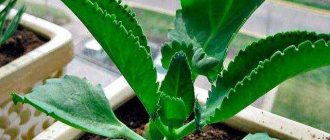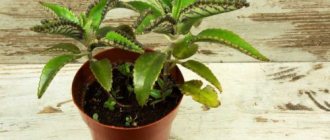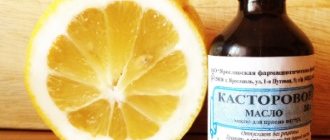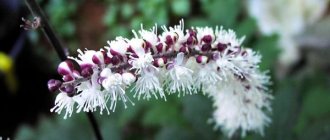Oregano is a perennial herbaceous plant, distinguished by its unpretentiousness to the places where it grows and its pleasant aroma. The Latin name of the plant is origanum vulgare. In cooking, the herb oregano is known as oregano. And popularly this plant is called: motherwort, flea beetle, incense, macerdushka, bee-lover, spirit flower, bedbug, etc.
You can find oregano grass literally everywhere; it grows in forests and meadows, on the slopes of ravines and in valleys, in gardens, orchards, and even on roadsides. Therefore, as a rule, there are no problems with the collection and preparation of this plant. The plant is collected during the flowering period, then dried under a canopy, after spreading it in a thin layer. The shelf life of dried harvested raw materials is one year.
pharmachologic effect
Oregano (oregano, oregano, motherwort, incense, zenowka, macerdushka) is a perennial herb from the genus Oregano of the Oregano family.
It has a sedative, expectorant and diuretic effect, enhancing intestinal motility. It has antimicrobial properties, increases appetite and secretion of gastric juice.
The herb Oregano is most common in Europe and the Mediterranean. It grows mainly in open areas - forest edges, clearings, hillsides and dry open areas.
Oregano grass is a little more than half a meter in height, the rhizome is branched, the stem is softly pubescent and branched in the upper part. Leaves are from 1 to 4 cm, ovate, pointed upward. Blooms with numerous small purple flowers starting in June. The seeds ripen by August. The smell of Oregano Herb is gentle and pleasant, vaguely reminiscent of the smell of marjoram, the taste is bitter-spicy, slightly tart, astringent. Collected from the second year of growing season, usually cutting at a height of 17-20 cm from the soil.
Oregano herb contains ascorbic acid and tannins, which are most abundant in the leaves and much less in the flowers and stems. The collected herb can be extracted into essential oil or dried for later use as a medicine or as a spice in cooking. To obtain essential oil, oregano grass is processed immediately after collection by hydrodistillation. Use well-ventilated areas for drying.
In some countries, Oregano Herb is cultivated and most often used in cooking as a spicy aromatic plant, better known as Oregano. It is used for preparing vegetable and meat dishes, pickles, baked goods, as well as in the composition of various teas in the cuisines of different nations.
Essential oil of Oregano is used in cooking (in the production of liqueurs, tinctures, beer and kvass), in perfumery (in the production of toothpastes, cologne, soap), in folk and traditional medicine.
Photos of the plant
If you decide to collect perfume flowers yourself for personal needs, then choose those stems that do not exceed 30 centimeters in height. Oregano is a perennial herb, the tall stems belong to fairly old plants. They are not bad, but they may have less taste, aroma and beneficial properties than young shoots.
Choosing the right plant is not difficult. Perhaps this will be the most beautiful flower of all that is in the meadow. The plant blooms brightly and voluminously. To be on the safe side, check out the photo or print it before packing.
Indications for use
Oregano herb is used internally and externally. Used internally in the form of infusions for:
- Respiratory tract diseases - acute and chronic bronchitis, as well as acute respiratory viral infections as an expectorant;
- Secretory insufficiency of the gastrointestinal tract;
- Intestinal atony, as well as to improve digestion and appetite;
- Chronic gastritis;
- Enterocolitis, which is accompanied by constipation or flatulence;
- Diseases of the liver and gall bladder.
Externally, Oregano herb is used for pyoderma and diathesis (atopic dermatitis) as part of complex therapy.
Medicinal properties Oregano herbs - expectorant, diaphoretic, sedative, used in the treatment of colds; sedatives - for insomnia, neuroses, hysteria, headaches; analgesic, hemostatic, sedative - for stomatitis, periodontal disease, gingivitis.
Due to its properties, Oregano Herb can be used as a stimulant and tonic. In folk medicine, it is used in the treatment of boils, abscesses, eczema, various rashes, itchy dermatoses, for healing wounds and as a means to regulate menstruation.
Video: Oregano – a long-living herb
We invite you to watch the video; it will give you a complete understanding of the qualities of such a product as oregano. The author will tell you not only about the properties of the plant, but also about the etymology of the origin of the name in different cultures.
Now you know about the appearance, drying process and methods of preparing drinks from incense. It is especially interesting to listen to excerpts from the Russian botanical dictionary of the Russian scientist Nikolai Annenkov, in which the author admired the plant and studied its properties and benefits.
Contraindications
The use of Oregano Herb is contraindicated during pregnancy (due to its stimulating effect on the smooth muscles of the uterus), during breastfeeding and under the age of 18 years. It is also not used for:
- Increased gastric secretion;
- Diseases of the cardiovascular system;
- Peptic ulcer of the duodenum and stomach.
A contraindication for Oregano Herb is hypersensitivity to the drug; in this case, the use of Oregano Herb is unacceptable, and when prescribing analogues, allergy tests are performed.
Storage conditions and periods
The herb should be stored in a dry place, first placed in a thick paper bag or sealed container.
The packaging must indicate the date of collection or release and the name of the herbal preparation.
Shelf life – 2 years. After its expiration, the herb can be brewed for medicinal baths. It is necessary to exclude children from accessing the drug.
Mode of application
To prepare infusions, 2 tablespoons of crushed Oregano Herb (about 10 g) are poured into 200 ml of hot boiled water and heated for 15 minutes in a water bath. After cooling for an hour at room temperature, the infusion is filtered and the resulting volume is adjusted to 200 ml. Depending on the indications, take 1/4-1/2 cup 15-20 minutes before meals 2 times a day.
Externally, the infusion, after shaking, is used for lotions and baths several times a day.
When using Oregano Herb, minor allergic reactions are possible.
Diabetes
A 2015 study found that oregano extract improved type 1 diabetes in mice, presumably due to the plant's antioxidant properties, its ability to prevent cell death in the body, and its positive effect on immunity.
The medicinal composition of oregano may be useful in cases of type 2 diabetes .
A 2021 study showed that taking the leaves and oil helps restore damaged liver and kidney cells, has a positive effect on genes that are responsible for fat and carbohydrate metabolism, as well as insulin resistance.
Traditional medicine recipes
Ancient healers advised all women and girls to use infusions, decoctions, and ointments based on Oregano. They believed that in addition to medicinal purposes, the herb had the ability to awaken the maternal instinct in a woman, help mothers, raise brides and alleviate the lot of women in labor. Here are some of their old folk recipes:
Forest mint infusion strengthens the female body, improves the condition of nails and hair, and gives shine to the eyes:
- 1 tbsp. motherboard spoon;
- 1 tbsp. spoon of buckwheat honey.
Bring to a boil in a glass of water and leave for half an hour.
Oregano oil
Oregano decoction is an excellent sedative. Many doctors recommend this collection during the treatment of epilepsy:
- 1 tbsp. spoon of forest mint;
- 1 tbsp. spoon of linden honey.
The boiling process is three minutes, then left to infuse for half an hour and drunk before eating.
Breast tea is used for various colds and has an expectorant and anti-inflammatory effect:
- 2 tbsp. spoons of marshmallow;
- 1 tbsp forest mint;
- 2 tbsp. spoons of coltsfoot leaves;
- 1 tbsp. spoon of linden honey.
Brew two glasses of boiling water, after a quarter of an hour, drink.
Diaphoretic tea turns out to be quite a cure during colds and inflammations. It's quite simple to prepare:
- 2 tbsp. coltsfoot spoons;
- 2 tbsp. spoons of dried raspberries;
- 1 tbsp. spoon of oregano.
Essential oils of the plant are widely used in cosmetology
Use of essential oil
Oregano is a plant with a delicate and healing scent. This is successfully used in the manufacture of cosmetics and gynecology. As it turned out, squeezing the essential oils of this plant significantly improves the condition of the hair and facial skin. Takes care of the condition of the woman’s body as a whole.
And finally. Dear women, be healthy, be beautiful. Read the blog, subscribe to updates, share the necessary information with friends. And I will try to please you with articles about female and male herbs. All the best.
Source
Motherboard for women's health
Oregano is a female herb and has many purely feminine properties. It can heal, but it can also harm. Before using it, you need to approach this issue with great care and respect.
A very good helper is forest mint during menopause. This infusion is passed down from generation to generation and helps relieve irritability and fatigue:
- 50 g thyme;
- 100 g oregano;
- 100 g linden honey;
- 50 g of millennium.
The collection is infused in a liter of boiling water for 24 hours; the infusion is consumed by dividing the dose into several servings per day.
Oregano will help with menopause
Oregano juice is useful for various female disorders and menstrual cycle disorders.
Mother tea is prepared to stabilize the nervous system and general restoration of the body:
- 1 tbsp. a spoonful of mint;
- 1 tbsp. spoon of oregano;
- 1 tbsp. spoon of honey;
- 100 grams of finely chopped onions.
If desired, you can add milk or cream to the tea. It helps very well during colds.
A decoction of forest mint copes well with bad odor, both from the mouth and in other problem areas:
- 2 tbsp. spoons of dry motherboard;
- 1 tbsp. spoon of St. John's wort;
- 1 tbsp. spoon of celandine.
Oregano oil
Boil a glass of water and leave for a little while. After this, rinse and drink all day. Can be used as lotions or to make foot baths. The same decoction can be used as a hair rinse and facial tonic.
Motherwort is considered to be a herb for women, and men, with constant use, risk reducing potency. It is considered possible to use tinctures and ointments based on bugs, but not for too long.
Description
Several regions of the globe are considered the homeland of oregano - the north of the African continent and South-West Asia. But its growth area is much wider, from the Mediterranean coast in Europe to Central Asia.
In Russia, forest mint is found in the European part, in the Caucasus, in the south of Siberia. As a crop, the oregano plant is cultivated in North America, where it has been known only since the twentieth century, and in European countries.
Oregano is a herbaceous plant or subshrub from the family Lamiaceae, or Lamiaceae. It also includes plants such as mint, basil, lemon balm, and lavender. The perennial on average reaches a height of 30 to 75 cm. Sometimes it grows up to 1 m. It has straight tetrahedral stems, slightly pubescent, reddish in color, branched at the top. The rhizome is creeping, branched, glabrous.
The leaves are petiolate, opposite, up to 4 cm long. Their plates are distinguished by their oblong-ovate shape and pointed ends. The edges are entire or finely toothed. The color of the upper surface is dark green, the lower surface is grayish-green.
In July and August, small tubular flowers bloom on oregano. They are located in the axils of the bracts and are collected in corymbose-paniculate inflorescences. Color: pink or purple, with a violet tint. The corolla of oregano is two-lipped, with a poorly developed upper lip and stamens protruding from the corolla. The fruits are formed in August and September, have a round or ovoid shape, and are divided into 4 brown nuts.
A characteristic feature of oregano is the presence of soft hairs covering the entire plant. They emit a strong aroma.
Oregano grows in well-lit, dry clearings, meadows, along river beds, clearings and bush thickets, in rare coniferous, deciduous, mixed forests, and on the slopes of ravines. Sometimes found in gardens. Survives on all types of soil. Loves open areas. Easily withstands cold. With the start of the season it quickly comes to life.









